Terratec Aureon 7.1 PCI Sound Card Review
Terratec Aureon 7.1 PCI Sound Card
Terratec's Aureon 7.1 offers mucho surround sound and Dolby Digital Live technology for not much cash. Paul Weir investigates.
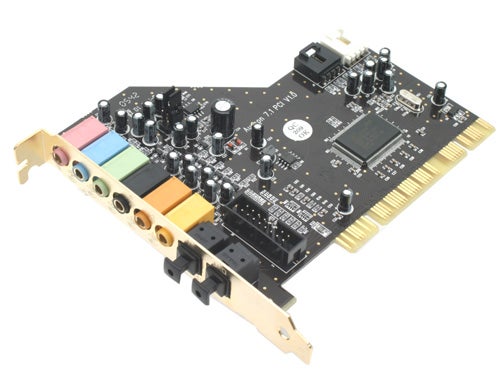
Verdict
Key Specifications
- Review Price: £30.00
The Aureon PCI 7.1 is the latest in the extensive Aureon line up from Terratec. The 7.1 is similar to the Aureon 5.1 but with a couple more channels, just in case six weren’t enough (in soundcard land 5.1 equals six). The headline feature of the card though is the inclusion of Dolby Digital Live, which means that any audio signal can be encoded into Dolby Digital in real-time. This doesn’t mean that you’ll get surround sound from any signal only that you’ll get Dolby Digital, which can be anything from a mono up to a 7.1 channel signal. 
Installation threw up no surprises but it should be noted that the manual is pretty pathetic and offers no additional information other than installation instructions (including a diagram which is incorrectly marked). Given that many people may not be aware of the capabilities and limitations of Dolby Digital, a help file, even as a PDF, would have been useful. In addition, it would also have been considerate to have included a suitable S/PDIF (Toslink) cable as it’s not the kind of thing one necessarily has lying around. Most likely this would have adversely affected the price of what is, by any standard, a budget soundcard, but as Dolby Digital is the main selling point it’s an unwelcome omission.
The software on the CD is similarly spartan with only Terratec’s standard mixer included. I’ve previously moaned about Creative’s overkill when it comes to bundled software and eye candy, but the Terratec mixer goes the other way. It’s pig ugly and an overhaul is long overdue, preferably one that also includes level metering.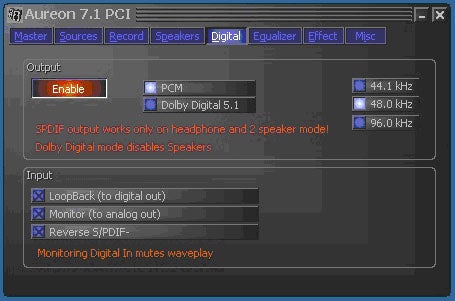
The card comes with a separate joystick port bracket, I’ve not seen one of these for a long time since the adoption of USB as the preferred solution for gaming and MIDI devices. The board itself sports a similarly old-school dip switch to alter the first audio output between line level and headphone level. Many cards don’t feature a headphone option so it’s a useful addition but it would have been much more preferable for this to be selected in software. Once the card is installed and the computer case closed, you’re stuck with whatever option was chosen. I for one regularly move between headphones and speakers. 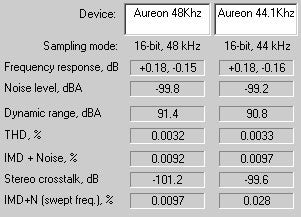
Dolby Digital is an encoded compressed digital signal. It’s easy to forget that Dolby Digital is compressed, the original intention to include up to six channels (front stereo, centre, rear stereo and sub-woofer) using the equivalent bandwidth of a standard uncompressed stereo signal. While it uses a similar technique to mp3 compression, as it’s a newer and more sophisticated technology the compression artefacts are far less obvious, particularly if listening to a film or game rather than music. The promotional material emphasises the benefits of using a digital connection to the amp, including cutting out noise and interference coming from the audio cables. In my experience noise from cables is less of a problem than the interference picked up by the analogue connections on the card from the PC itself. Sure enough using the digital connection helps clean this up substantially. 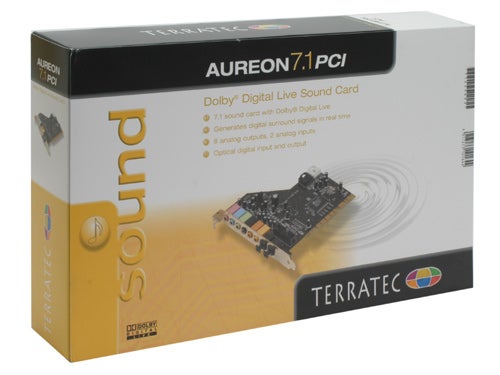
The maximum number of channels that Dolby Digital Live can output is 5.1, the 7.1 features of the card only relate to its analogue outputs. This seems like a missed opportunity to the two features to complement each other, but I guess it’s a limitation of Dolby’s technology rather Terratec.
That said, I’ve yet to be convinced of the merits of including 7.1 on a budget consumer soundcard (there’s an interesting article on the usefulness or otherwise of 7.1 here. With so little 7.1 encoded material available it makes much more sense to spend the money on a higher quality 5.1 speaker system which will be more than adequate for all but the largest of living spaces. This card doesn’t have ASIO drivers so those eight channels can’t be addressed by any music software you may be running.
The card itself sports as many connections as is physically possible to include within a single PCI bracket. They include a microphone and line input, four stereo outputs and a S/PDIF input and output (which has the Dolby Digital Live).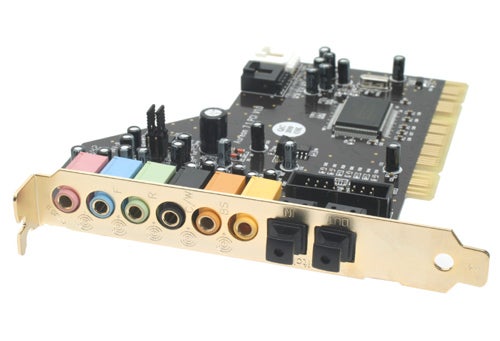
In terms of features beyond Dolby Digital, you get the usual EAX 2 support. Whilst the chip on the card mentions support for HRTF, or virtual surround, there was no obvious way of turning this on, unlike other Terratec cards, and using the positional software test that forms part of the Right Mark 3D Sound test didn’t reveal any difference when the sound is placed behind the listener.
Whizzing through the usual Right Mark Audio Analyzer tests gives excellent results for a soundcard in this price bracket, almost matching the Audigy 4. And yet when I use my utterly un-scientific method of just looking at the noise floor of the card using software such as Audacity, it reads a high -54dB which suggests rather noisy inputs. If you’re looking for heavy duty recording on a budget, this may not be the card for you.
This card would be particularly attractive to the home theatre or media PC market. Dolby Digital encoding on the Xbox was so successful because it made the process of watching a DVD or playing a game in surround sound seamless, avoiding a spaghetti junction of cables.
The Dolby Digital Live works as advertised although it’s not without its quirks. One of the limitations of the Terratec mixer is that for the digital connection to be enabled, the speaker setting must be on stereo or headphones. For DVD watching, this isn’t a problem since the SPDIF connection simply passes the Dolby AC3 signal coming from the disc into the decoder and amp, seamlessly switching between mono, stereo or 5.1.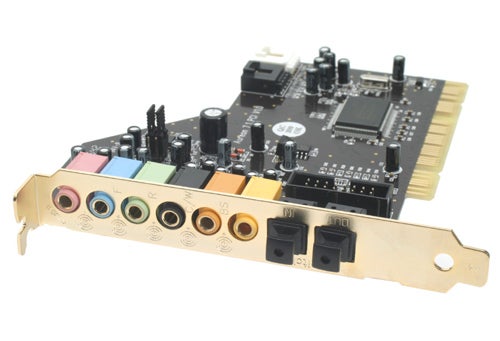
For games however, the Windows mixer must be set to 5.1 speakers but the Terratec mixer left on stereo, in order to keep the Live option active. This is completely counter-intuitive, made more obscure by the lack of any proper instructions for the card. One further anomaly was switching between the Dolby Digital 5.1 and PCM option whilst playing audio, caused the kiss of death on my test machine.
{image:
”’Verdict”’
As a budget soundcard you can’t go far wrong with the Aureon 7.1 PCI. With its quality audio output and the convenience of Dolby Digital Live (only useful if your amp has a S/PDIF (otherwise known as Toslink) input), it could be an ideal, as well as tidy, solution. However, if you intend to use the card for audio recording or heavy game playing, you should expect to pay more for a better suited solution.

